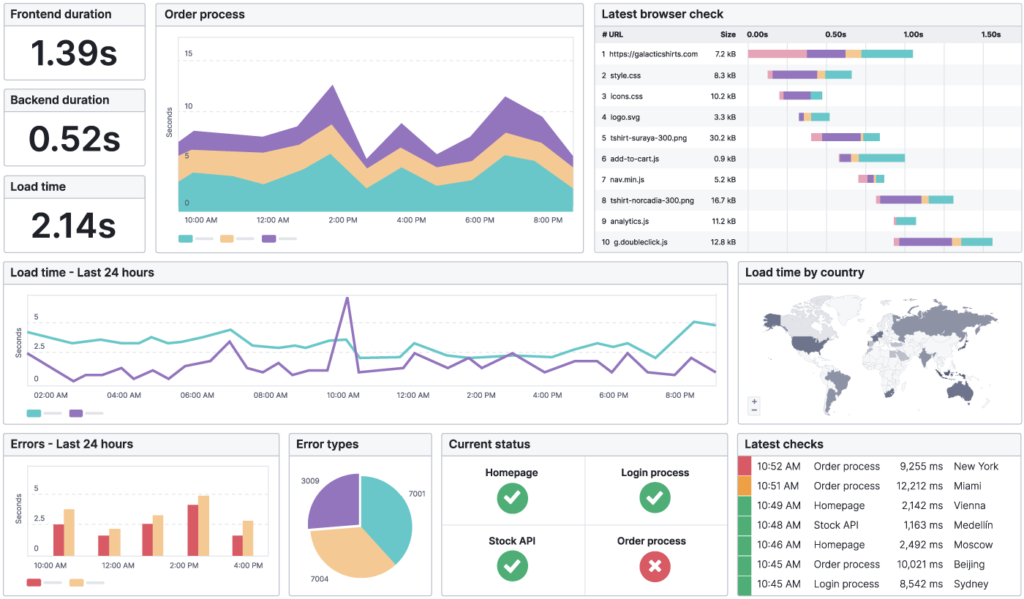
Hey fellow website enthusiasts! Imagine having the ability to create not just one, but multiple websites using a single domain. It may sound like a fantasy, but I’m here to tell you that it’s absolutely possible to create 2 or more websites under 1 single domain. By harnessing the power of subdomains or directories, you can unlock a world of possibilities and take your online presence to new heights. Let’s dive in and explore the magic of utilizing one domain for multiple websites!
What options are out there ?
Two options are out there to achieve this requirement. Let’s discuss them briefly in following section.
Subdomains: You can create subdomains under your main domain to set up separate websites. For example, if your main domain is “example.com,” you can create subdomains like “mysite1.example.com” and “mysite2.example.com” for different websites. Each subdomain can have its own unique content and website structure.
Picture this: your main domain is like a canvas waiting to be filled with unique creations. With subdomains, you can let your imagination run wild and establish multiple websites under one roof. By adding a distinctive prefix before your domain name, you can create memorable subdomains like “blog.yourdomain.com” or “shop.yourdomain.com.” Each subdomain can have its own personality, content, and purpose, enabling you to cater to different audiences or showcase various aspects of your brand.
Directories: Alternatively, you can create directories within your main domain and host separate websites within those directories. For instance, you could have “example.com/site1” and “example.com/site2” as separate websites. Each directory would contain the necessary files and content for each website.
If subdomains feel like separate worlds, then directories are like well-organized rooms within your domain. By creating directories within your main domain, you can house multiple websites with their own unique identities. Whether it’s “yourdomain.com/site1” or “yourdomain.com/site2,” each directory becomes a virtual home for your distinct web projects. It’s a practical way to manage multiple websites efficiently, maintain a cohesive brand presence, and simplify website administration.
Can it impact my existing website performance or resources associated with it ?

Yes, It will have impact on the resources of the website. While the concept of multiple websites under one domain is thrilling, it’s crucial to ensure that your hosting resources can handle the load. Depending on the size and complexity of your websites, you might need to consider a hosting plan that provides ample storage, bandwidth, and server capabilities. Additionally, configuring your server and managing the hosting environment may require technical expertise. If you’re not confident in doing it yourself, seeking guidance from hosting providers or web professionals can ensure a smooth setup and optimal performance.
Are there any limitations or restrictions when it comes to creating multiple websites under one domain?
While creating multiple websites under one domain offers flexibility, it’s important to consider the limitations and restrictions imposed by your hosting provider and the resources available. Factors such as storage space, bandwidth, and server capabilities can influence the number and size of websites you can host effectively. Be sure to review your hosting plan and consult with your provider to understand any limitations or additional costs associated with hosting multiple websites.
Are there any SEO implications or best practices to consider when managing multiple websites on one domain?

When managing multiple websites on one domain, it’s important to consider SEO implications and follow best practices. Here are a few key points to keep in mind:
- Ensure that each website has unique and valuable content to avoid duplication issues.
- Set up proper URL structures, such as using subfolders for directories or appropriate subdomains.
- Implement proper internal linking between the websites to establish connections and aid navigation.
- Optimize meta tags, titles, and descriptions for each website’s individual pages.
- Create unique XML sitemaps for each website and submit them to search engines.
- Monitor and analyze the performance of each website separately using analytics tools.
Can I track and analyze the performance of each website separately, including traffic, conversions, and user engagement?

Yes, you can track and analyze the performance of each website separately by utilizing website analytics tools. Most CMS platforms offer built-in analytics features or plugins that allow you to monitor traffic, conversions, and user engagement for each website individually. Additionally, you can integrate external analytics tools like Google Analytics to gain more.
How can I ensure that each website under the same domain has a unique design and branding?
To ensure that each website under the same domain has a unique design and branding, you can customize the themes, templates, and layouts for each website individually. Most CMS platforms offer a wide range of themes or templates that can be customized with unique colors, fonts, and images. Additionally, you can create distinct logos, branding elements, and content to differentiate each website’s identity. By tailoring the design and branding elements, you can create a cohesive yet distinct experience for each website.
What security measures should I take to protect each website under the same domain?

Folks, maintaining proper security measures is crucial to protect each website under the same domain. Here are some essential steps:
- Keep all websites and CMS platforms up to date with the latest security patches and updates.
- Use strong and unique passwords for all accounts associated with each website.
- Implement SSL/TLS certificates to encrypt data transmission and secure user interactions.
- Regularly back up each website’s files and databases to safeguard against data loss.
- Install security plugins or extensions to add an extra layer of protection.
- Monitor for suspicious activities, such as unauthorized access attempts or malware infections.
- Educate yourself and your team on best practices for website security and data protection.
Conclusion
The power to create multiple websites under one domain is a remarkable gift. With subdomains and directories, you can unleash your creativity, organize your digital realm, and optimize your online resources. It’s an invitation to explore endless possibilities, cater to diverse audiences, and grow your online presence in exciting ways. So, don’t be afraid to embrace this magic and unlock the potential of one domain for multiple websites. The digital world is yours to conquer!
Thank you